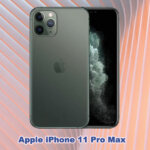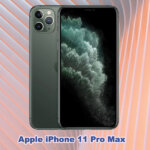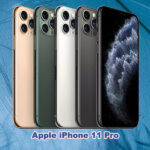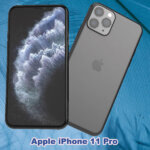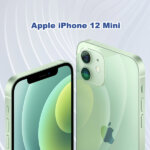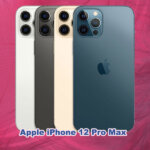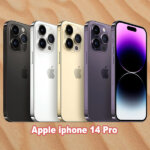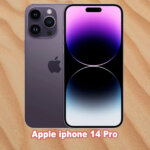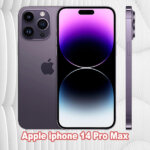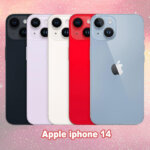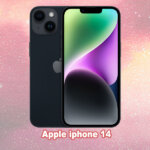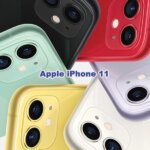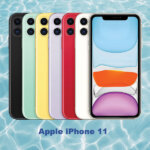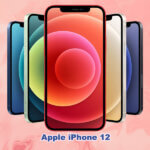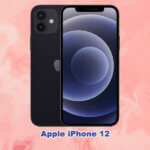Apple iPhone 12 Mobile Phone - Specifications
| Mobile Phone Deals ∇ |
 Apple iPhone 13 Apple iPhone 13 | ||||
64 GB | 64 GB | 64GB | 64 GB | 64 GB |
| 128 GB | x | x | 128 GB | 128 GB |
| 256 GB | 256 GB | 256 GB | 256 GB | 256 GB |
| 512 GB | 512 GB | 512 GB | x | x |
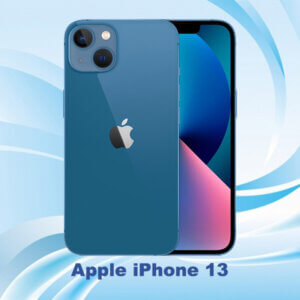 Apple iPhone 13 mini Apple iPhone 13 mini | ||||
| iPhone 12 64 GB | iPhone 12 mini 64 GB | iPhone 12 Pro x | iPhone 12 Pro Max x | iPad Pro 12.9 (2022) |
| 128 GB | 128 GB | 128 GB | 128 GB | iPad Pro 11 (2022) |
| 256 GB | 256 GB | 256 GB | 256 GB | iPad (2022) |
| x | x | 512 GB | 512 GB | iPad Air (2022) |
 Apple iPhone 13 Pro Apple iPhone 13 Pro | ||||
| iPhone 13 128 GB | iPhone 13 mini 128 GB | iPhone 13 Pro 128 GB | 128 GB | iPad mini (2021) |
| 256 GB | 256 GB | 256 GB | 256 GB | iPad 10.2 (2021) |
| 512 GB | 512 GB | 512 GB | 512 GB | iPad Pro 12.9 (2021) |
| x | x | 1 TB | 1 TB | iPad Pro 11 (2021) |
 Apple iPhone 13 Pro Max Apple iPhone 13 Pro Max | ||||
128 GB | iPhone 14 Plus 128 GB | 128 GB | 128 GB | iPad Air (2020) |
| 256 GB | 256 GB | 256 GB | 256 GB | iPad 10.2 (2020) |
| 512 GB | 512 GB | 512 GB | 512 GB | iPad Pro 12.9 (2020) |
| 1 TB | 1 TB | 1 TB | 1 TB | iPad Pro 11 (2020) |
| Model Number: | iPhone 12 |
| Version: | A2403 (International); A2172 (USA); A2402 (Canada, Japan); A2404 (China, Hong Kong) |
| Released: | October, 2020 |
| SIM Card Type: | Single or Dual SIM (Nano-SIM ) |
| Network Included: | GSM / CDMA / HSPA / EVDO / LTE / 5G |
| 2G Network SIM 1: | 2G – GSM 850 / 900 / 1800 / 1900 |
| 2G Network SIM 2: | |
| 3G Network: | 3G – HSDPA 850 / 900 / 1700 (AWS) / 1900 / 2100 |
| 4G Network: | Yes |
| 5G Network: | Yes |
| Display Type: | OLED Super Retina XDR |
| Resolution (pixels): | 2532 x 1170 – pixel |
| Operating System: | iOS 14.1, upgradable to iOS 16 |
| Physical Weight: | 162 grams (5.73 ounces) |
| Screen Size: | 6.1 inches |
| Dimension: Height x Width x Depth | 146.7 x 71.5 x 7.4 mm (5.78 x 2.82 x 0.29 inch) |
| RAM: | 4GB RAM |
| Internal Storage Capacity: | 64GB , 128GB , 256GB |
| Front Selfie Camera: | 12MP TrueDepth front camera |
| Back Main Camera: | Dual 12MP camera system (Main and Ultra Wide) |
| Main: ƒ/1.6 aperture | |
| Ultra Wide: ƒ/2.4 aperture | |
| LED Flash: | Yes, HDR |
| Front Selfie Video: | 4K , 1080p HD video recording at 25 fps, 30 fps or 60 fps |
| Video: | 4K , 1080p HD video recording at 25 fps, 30 fps or 60 fps |
| Hardware Chipset: | A14 Bionic chip |
| Motherboard CPU: | Hexa-core (2 x 3.1 GHz + 4 x 1.8 GHz) 6-core CPU |
| Hardware GPU: | Apple GPU (4-core GPU) |
| Card Slot: | No |
| Loudspeaker: | Yes |
| Headphone Jack: | No |
| Connectivity Wi-Fi: | Wi-Fi 802.11 |
| Wi-Fi hotspot: | Yes |
| Wi-Fi Direct: | |
| Bluetooth: | 5.1, A2DP, LE |
| GPS Capacity with A-GPS, GLONASS, GALILEO, BDS: | Yes |
| NFC: | Yes |
| Infrared Port: | |
| Radio: | No |
| USB port / Type: | USB 2.0, Lightning |
| Fingerprint: | Face ID sensors |
| Accelerometer: | Yes |
| Gyro: | Yes |
| Proximity: | Yes |
| Compass: | Yes |
| Battery: | 2815 mAh, non-removable / built in |
| Color Options: | Black, White, Red, Green, Blue, Purple |
| Other Features: | Ceramic Shield front, Compatible with MagSafe cases, Water resistant to a depth of 6 metres for up to 30 minutes, Splash, Water and Dust Resistant Rated IP68, Fast charging, MagSafe fast wireless charging. |
The iPhone 12 is a flagship smartphone from Apple that was released in October 2020. It features a 6.1-inch Super Retina XDR OLED display, a dual-camera system with 12 MP wide and ultrawide lenses, a 12 MP front-facing camera, and is powered by a Hexa-core processor and Apple GPU. It comes in four versions depending on the region and carrier compatibility, but all versions offer 5G connectivity. The iPhone 12 also features Face ID, an IP68 rating for dust and water resistance, and supports Ultra Wideband (UWB) technology.
| Model : | iPhone 12 | iPhone 12 mini | iPhone 12 Pro | iPhone 12 Pro Max | Memory | iPhone 12 | iPhone 12 mini | iPhone 12 Pro | iPhone 12 Pro Max |
| Display : | 6.1 inches | 5.4 inches | 6.1 inches | 6.7 inches | 64 GB | $750 | $700 | x | x |
| Camera : | 12 MP | 12 MP | 12 MP | 12 MP | 128 GB | $850 | $800 | $ 900 | $950 |
| Battery : | 2815 mAh | 2227 mAh | 2815 mAh | 3687 mAh | 256 GB | $900 | $900 | $ 1082 | $900 |
| RAM : | 4 GB | 4 GB | 6 GB | 6 GB | 512 GB | x | x | $ 1150 | $1150 |
Apple iPhone 12
The iPhone 12 is a smartphone developed by Apple Inc. and was released in October 2020. It features a 6.1-inch Super Retina XDR OLED display with a resolution of 1170 x 2532 pixels, and is powered by Apple’s A14 Bionic chip, which is the fastest chip in a smartphone. The phone runs on iOS 14 and is available in five colors: black, white, red, green, and blue.
The iPhone 12 has a dual-camera system on the back, which includes a 12-megapixel ultra-wide camera and a 12-megapixel wide camera, both with Night mode and Deep Fusion. It also supports HDR video recording with Dolby Vision up to 4K at 60 fps.
The front-facing camera is also 12-megapixels and has Night mode, Deep Fusion, and HDR recording capabilities. The phone supports 5G connectivity for faster download and upload speeds, as well as improved streaming quality.
The iPhone 12 also features MagSafe technology, which allows for magnetic attachments and wireless charging up to 15W. It has an IP68 rating for water and dust resistance, and includes Face ID for secure authentication.
The battery life of the iPhone 12 is up to 17 hours of video playback and up to 65 hours of audio playback, and it supports fast charging with up to 50% charge in 30 minutes with a 20W adapter (sold separately). It also supports Qi wireless charging with compatible chargers (also sold separately).
Depending on the region and carrier compatibility, the iPhone 12 has different model numbers. Different versions or model numbers of the iPhone 12 do not affect the performance or core features of the device. All iPhone 12 models have the same A14 Bionic chip, dual-camera system, 5G connectivity, Super Retina XDR OLED display, Face ID, and support for MagSafe accessories and wireless charging.
However, there may be differences in network compatibility and support for certain features depending on the region and carrier. For example, some iPhone 12 models may support different 5G frequency bands or may have different SIM card options. These differences are usually minor and should not affect the overall performance or user experience of the device.
The dimensions of the iPhone 12 are 146.7 x 71.5 x 7.4 mm (5.78 x 2.81 x 0.29 in). This makes it slightly smaller and thinner than its predecessor, the iPhone 11, which measured 150.9 x 75.7 x 8.3 mm (5.94 x 2.98 x 0.33 in). The reduced size of the iPhone 12 is due to its slim bezels and flat-edged design, which allows for a more compact form factor without sacrificing screen size. The iPhone 12 weighs approximately 164 grams (5.78 ounces), which is slightly lighter than the iPhone 11 (194 grams or 6.84 ounces). The compact size and lightweight design of the iPhone 12 make it easy to carry and use with one hand.
The iPhone 12 features a glass front and back with an aluminum frame, and is available with either a single Nano-SIM and eSIM or Dual SIM (Nano-SIM, dual stand-by) for the China market. The front and back glass panels of the iPhone 12 are made by Corning, and use a type of glass called “Ceramic Shield” that is designed to be more durable and resistant to cracking or shattering compared to previous iPhone models. The aluminum frame is made from a single piece of precision-milled aerospace-grade aluminum, which gives the device a premium look and feel.
The iPhone 12 also has an IP68 rating for dust and water resistance, which means it is designed to withstand immersion in up to 6 meters of water for up to 30 minutes. This rating provides protection against accidental spills, splashes, and exposure to rain or other wet conditions.
Avoid paying Taxes and International postage delay
If you are looking for a new smartphone with cutting-edge features and performance, you might be interested in buying an iPhone 14 or iPhone 14 Plus. These are the latest models of Apple’s flagship device, which offer a stunning design, a powerful A16 chip, a ProMotion display with adaptive refresh rate, a cinematic video mode with Dolby Vision HDR, and an advanced camera system with 3x optical zoom and macro photography.
However, buying an iPhone 14 or iPhone 14 Plus in your country might not be the best option for you. Depending on where you live, you might face some disadvantages such as higher prices due to taxes and tariffs, limited availability due to supply chain issues or delayed launch dates, or compatibility issues due to different network standards or carrier policies.
Therefore, you might want to consider buying an iPhone 14 or iPhone 14 Plus from abroad and use it in your country. This way, you can potentially save money by taking advantage of lower prices in other markets, get your hands on the device sooner by ordering from countries where it is already released, and enjoy more freedom and flexibility by choosing an unlocked model that works with any network provider.
However, before you decide to buy an iPhone 14 or iPhone 14 Plus from abroad and use it in your country, there are some things you need to be aware of. First of all, you need to make sure that the model you buy is compatible with the network bands and frequencies used by your carrier in your country. Second of all, you need to check if there are any import duties or taxes that apply when you bring the device into your country. Third of all, you need to be prepared for possible warranty issues or customer service difficulties if you encounter any problems with your device.
Buying an iPhone 14 or iPhone 14 Plus from abroad and use it in your country can be a smart move if you do your research carefully and weigh the pros and cons. It can help you avoid paying extra taxes and waiting for long delays while enjoying a premium smartphone experience. However, it can also involve some risks and challenges that you need to be ready for. Ultimately, the choice is yours.
| Apple iPhone 12 | US$ (USA) | Canada | Germany | France | Italy | Austria | Netherland | UK | MENA |
| 64GB | $750 | $750 | €700 | €700 | €700 | €700 | €700 | £700 | $750 |
| 128GB | $800 | $800 | €800 | €1050 | €1050 | €1050 | €1050 | £900 | $800 |
| 256GB | $850 | $850 | €850 | €1100 | €1100 | €1100 | €1100 | £950 | $850 |
| 512GB | $900 | $900 | €900 | €1200 | €1200 | €1200 | €1200 | £1050 | $900 |
| iPhone 12 mini | US$ (USA) | Canada | Germany | France | Italy | Austria | Netherland | UK | MENA |
| 64GB | $750 | $750 | €700 | €700 | €700 | €700 | €700 | £700 | $750 |
| 128GB | $800 | $800 | €800 | €1050 | €1050 | €1050 | €1050 | £900 | $800 |
| 256GB | $850 | $850 | €850 | €1100 | €1100 | €1100 | €1100 | £950 | $850 |
| 512GB | $900 | $900 | €900 | €1200 | €1200 | €1200 | €1200 | £1050 | $900 |
| iPhone 12 Pro | US$ (USA) | Canada | Germany | France | Italy | Austria | Netherland | UK | MENA |
| 64GB | $750 | $750 | €700 | €700 | €700 | €700 | €700 | £700 | $750 |
| 128GB | $800 | $800 | €800 | €1050 | €1050 | €1050 | €1050 | £900 | $800 |
| 256GB | $850 | $850 | €850 | €1100 | €1100 | €1100 | €1100 | £950 | $850 |
| 512GB | $900 | $900 | €900 | €1200 | €1200 | €1200 | €1200 | £1050 | $900 |
| iPhone 12 Pro Max | US$ (USA) | Canada | Germany | France | Italy | Austria | Netherland | UK | MENA |
| 64GB | $750 | $750 | €700 | €700 | €700 | €700 | €700 | £700 | $750 |
| 128GB | $800 | $800 | €800 | €1050 | €1050 | €1050 | €1050 | £900 | $800 |
| 256GB | $850 | $850 | €850 | €1100 | €1100 | €1100 | €1100 | £950 | $850 |
| 512GB | $900 | $900 | €900 | €1200 | €1200 | €1200 | €1200 | £1050 | $900 |
Apple iPhone 12 Display type
The iPhone 12 features a 6.1-inch Super Retina XDR OLED display with a resolution of 2532 x 1170 pixels at 460 pixels per inch (ppi). The Super Retina XDR display technology provides excellent contrast, brightness, and color accuracy, making it ideal for viewing HDR10 and Dolby Vision content. The display also features a high maximum brightness of 625 nits for typical use, and up to 1200 nits for HDR content, which allows for better visibility in bright outdoor conditions.
The screen-to-body ratio of the iPhone 12 is approximately 86%, which means that the display covers a large portion of the front of the device. The display also features slim bezels and a small notch at the top for the front-facing camera and other sensors, which allows for a larger viewing area without significantly increasing the overall size of the device.
The Super Retina XDR OLED display technology used in the iPhone 12 is a major upgrade over previous iPhone models. OLED (organic light-emitting diode) displays use individual pixels that emit light, which allows for true blacks and more vibrant colors compared to traditional LCD displays. The Super Retina XDR technology takes this further by providing high brightness, contrast, and color accuracy, which are essential for viewing HDR10 and Dolby Vision content.
HDR (high dynamic range) content provides a wider range of colors and brightness levels compared to standard video content, which allows for more realistic and immersive viewing experiences. The iPhone 12’s display supports both HDR10 and Dolby Vision, which are two of the most common HDR formats used in streaming video services such as Netflix, Disney+, and Apple TV+.
In addition to its high-quality display technology, the iPhone 12’s screen-to-body ratio of approximately 86% is also noteworthy. This means that the display covers a large portion of the front of the device, providing a more immersive viewing experience while still maintaining a relatively compact form factor. The slim bezels and small notch at the top of the display also help to maximize the viewing area without detracting from the overall design of the device.
Overall, the iPhone 12’s Super Retina XDR OLED display is a key feature of the device that provides a high-quality viewing experience for a wide range of content. Whether you’re streaming video content, browsing the web, or using apps, the display on the iPhone 12 is sure to impress with its vibrant colors, high brightness, and excellent contrast.
Apple iPhone 12 Version
The iPhone 12 has four different model numbers, depending on the region and carrier compatibility:
A2403 is the international version of the iPhone 12, which is sold in many countries around the world.
A2172 is the version of the iPhone 12 sold in the United States. This version is compatible with most US carriers, including AT&T, Verizon, T-Mobile, and Sprint.
A2402 is the version of the iPhone 12 sold in Canada and Japan. This version is also compatible with some carriers in the United States, such as AT&T and T-Mobile.
A2404 is the version of the iPhone 12 sold in China and Hong Kong. This version features additional support for certain cellular bands used in China.
It’s important to note that while there are different model numbers for the iPhone 12, the basic features and specifications of the device are the same across all versions. This means that regardless of which model number you have, you can expect the same performance, display quality, camera capabilities, and other features that the iPhone 12 is known for. The main differences between the different versions are related to carrier compatibility and the specific cellular bands supported in different regions.
The different model numbers of the iPhone 12 mainly refer to the specific cellular bands that the device supports, which are tailored to different regions around the world. In general, the international version of the iPhone 12 (A2403) is designed to work with a wide range of carriers and cellular networks in different countries, while the other versions are optimized for specific regions.
For example, the A2172 model of the iPhone 12 sold in the United States is optimized for use with major US carriers such as AT&T, Verizon, T-Mobile, and Sprint. This means that the device supports the specific cellular bands used by these carriers, as well as any additional features that they may offer, such as 5G coverage or Wi-Fi calling.
Similarly, the A2404 model of the iPhone 12 sold in China and Hong Kong is optimized for use with Chinese carriers such as China Mobile, China Unicom, and China Telecom. This version of the device includes support for additional cellular bands that are commonly used in China, as well as features like dual SIM capability and eSIM support that are popular in the Chinese market.
Regardless of which model of the iPhone 12 you have, you can expect the same high-quality features and performance that the device is known for. This includes features like the Super Retina XDR OLED display, the A14 Bionic chip, and advanced camera capabilities, as well as support for 5G networks and other advanced technologies. Whether you’re using the iPhone 12 in the United States, China, or any other region around the world, you can count on it to provide an excellent user experience with top-of-the-line features and capabilities.
Apple iPhone 12 back main camera
The iPhone 12 features a dual camera system on the back, which includes a 12-megapixel wide-angle lens and a 12-megapixel ultra-wide lens. Here are some more details about the camera features:
The wide-angle lens has an aperture of f/1.6 and a focal length of 26mm, making it ideal for capturing everyday photos and portraits. It also includes dual pixel phase detection autofocus (PDAF) and optical image stabilization (OIS), which helps to reduce blur and ensure sharp, clear photos.
The ultra-wide lens has an aperture of f/2.4 and a focal length of 13mm, making it ideal for capturing wide landscapes or group shots. It has a 120-degree field of view, which means you can capture more of your surroundings in a single shot.
Both lenses are capable of capturing high-quality photos in a range of lighting conditions, thanks to features like dual-LED dual-tone flash and HDR (high dynamic range) for photos and panoramas. These features help to balance the exposure and colors in your photos, resulting in more natural-looking and vibrant images.
Overall, the camera system on the iPhone 12 is considered to be one of the best in the industry, with excellent image quality, fast autofocus, and advanced features like Night mode and Deep Fusion. Whether you’re a professional photographer or just someone who enjoys taking photos with your smartphone, the iPhone 12’s camera is sure to impress.
One of the standout features of the iPhone 12’s camera system is its ability to capture high-quality photos in a range of lighting conditions. This is thanks in part to the device’s Night mode, which uses advanced algorithms and computational photography techniques to capture brighter and more detailed photos in low-light settings. When you take a photo in Night mode, the iPhone 12 will automatically detect the lighting conditions and adjust the exposure and other settings accordingly, resulting in brighter and clearer photos with less noise and blur.
The iPhone 12 also includes Deep Fusion, which is another advanced feature that uses machine learning to enhance the detail and clarity of your photos. When you take a photo with Deep Fusion enabled, the device will capture multiple exposures and combine them into a single, high-quality image with more detail and texture. This feature is especially useful for capturing fine details in things like clothing, foliage, or architectural features.
In addition to these advanced features, the iPhone 12’s camera also includes a range of other useful settings and tools. For example, you can adjust the exposure, focus, and white balance manually, or use features like Live Photos or Burst mode to capture multiple shots in quick succession. There’s also a range of built-in filters and effects that you can use to customize your photos on the fly, as well as a powerful video camera that can shoot up to 4K resolution at 60 frames per second.
Overall, the camera system on the iPhone 12 is one of its strongest features, providing excellent image quality and a wide range of advanced features and tools. Whether you’re a professional photographer or just someone who enjoys taking photos with your smartphone, the iPhone 12’s camera is sure to impress.
The iPhone 12’s camera is also capable of capturing high-quality video footage with a variety of advanced features and settings. For starters, the device can shoot video in up to 4K resolution at 24, 30, or 60 frames per second, allowing you to capture incredibly detailed and lifelike footage.
In addition to its high resolution capabilities, the iPhone 12’s camera also supports a range of other video settings and features. For example, you can shoot in 1080p at up to 240 frames per second, allowing you to create stunning slow-motion footage. The device also supports HDR video recording, which allows you to capture more detail and vivid colors in your footage, and Dolby Vision HDR recording at up to 30 frames per second.
To ensure that your audio is captured with the same level of quality as your video, the iPhone 12’s camera also includes stereo sound recording. This means that the device can capture audio from two different sources, providing a more immersive and realistic audio experience.
Apple iPhone 12 front selfie camera
The iPhone 12’s front-facing selfie camera is also quite impressive, with a 12-megapixel sensor that’s capable of capturing detailed, high-quality images. The camera has an aperture of f/2.2 and a focal length of 23mm, which is wide enough to capture a large field of view and ensure that everyone is in the shot.
One unique feature of the iPhone 12’s front camera is its TrueDepth sensor, which uses advanced technology to capture depth information about your face. This sensor powers the device’s facial recognition and biometric authentication features, allowing you to unlock your phone and make secure purchases using just your face.
The front camera also supports HDR photography, which can help to enhance the contrast and detail in your photos, particularly in situations where there is a lot of contrast between light and dark areas.
The iPhone 12’s front-facing selfie camera is a 12-megapixel camera with an aperture of f/2.2, a focal length of 23mm, and a 1/3.6″ sensor size. The camera is capable of capturing sharp and detailed photos with vibrant colors and accurate skin tones. It also features a Smart HDR mode that enhances the dynamic range of your photos by automatically adjusting the exposure and contrast based on the scene.
One of the most unique features of the iPhone 12’s front camera is its TrueDepth sensor. This advanced technology uses a combination of infrared light and a dot projector to create a detailed 3D map of your face. This map is used to power the device’s facial recognition and biometric authentication features, which allows you to unlock your phone and make secure purchases using just your face.
The TrueDepth sensor also enables the camera’s advanced Portrait mode, which creates stunning bokeh (background blur) effects by analyzing the depth information in your photos. This feature can be used to capture beautiful, professional-quality selfies with blurred backgrounds that make your subject stand out.
The iPhone 12’s front-facing selfie camera is capable of recording high-quality videos in a range of resolutions and frame rates. It can record 4K videos at 24, 30, and 60 frames per second (fps), as well as 1080p videos at 30, 60, and 120 fps. The camera also features gyroscopic electronic image stabilization (gyro-EIS), which helps to keep your videos steady and reduce the impact of camera shake and other motion-related issues.
When recording videos with the iPhone 12’s front-facing camera, you can take advantage of a range of advanced features and settings to capture the perfect shot. For example, you can adjust the exposure and focus by tapping on different parts of the screen, and you can switch between different video modes and filters to create different effects and styles.
The camera also includes a number of advanced features for editing and post-processing your videos. For example, you can use the built-in video editor to trim and crop your footage, add music and sound effects, and adjust the speed and playback direction of your clips. You can also use third-party video editing apps to further refine and enhance your videos, taking advantage of the device’s powerful processor and advanced graphics capabilities.
Apple iPhone 12 CPU and GPU
The iPhone 12 is powered by a powerful Hexa-core processor that delivers fast and efficient performance for a range of tasks, from browsing the web and streaming videos to playing games and running demanding apps. The processor is based on a combination of two high-performance Firestorm cores and four energy-efficient Icestorm cores, which work together to deliver optimal performance and power efficiency.
The two Firestorm cores in the iPhone 12’s CPU are designed for heavy-duty processing tasks, such as running complex apps and games, editing high-resolution photos and videos, and rendering 3D graphics and animations. These cores are clocked at 3.1 GHz, which allows them to deliver lightning-fast performance and smooth, responsive multitasking.
The four Icestorm cores, on the other hand, are designed for less demanding tasks, such as checking email, browsing social media, and running background processes. These cores are clocked at 1.8 GHz, which allows them to conserve power and extend the battery life of the device, while still delivering responsive and snappy performance.
The iPhone 12’s CPU is based on Apple’s latest A14 Bionic chip, which is one of the most powerful and advanced mobile processors available today. The chip is manufactured using cutting-edge 5-nanometer technology, which allows for greater efficiency and performance compared to previous generations of mobile processors. The A14 Bionic chip includes a range of advanced features and technologies, such as a Neural Engine for machine learning and artificial intelligence, a powerful graphics processor for gaming and multimedia, and advanced security features to protect your data and privacy.
The iPhone 12 is equipped with the Apple-designed GPU (Graphics Processing Unit), which features four cores. Apple has not disclosed detailed information about the GPU’s specifications, but it is known to be a high-performance graphics processor capable of handling demanding graphics tasks such as gaming, video editing, and AR (Augmented Reality) applications.
The GPU is tightly integrated with the Apple A14 Bionic chip, which is built using a 5-nanometer manufacturing process. This allows for more transistors to be packed into a smaller space, resulting in improved performance and energy efficiency. The GPU works in conjunction with the CPU (Central Processing Unit) to deliver fast and fluid performance, as well as smooth and responsive graphics.
The iPhone 12’s GPU supports advanced graphics features such as Metal, which is Apple’s proprietary low-level graphics API (Application Programming Interface) that enables developers to optimize their apps for the iPhone’s GPU. Metal allows for more efficient use of the GPU’s resources, resulting in faster performance and improved battery life.
Overall, the iPhone 12’s GPU is a powerful and efficient graphics processor that delivers smooth and responsive graphics for a wide range of applications and tasks.
Apple iPhone 12 sensors
The iPhone 12 is equipped with several sensors that enable it to provide a range of features and capabilities to the user. These sensors include:
Face ID: The iPhone 12 uses a TrueDepth camera system that incorporates a dot projector, an infrared camera, and a flood illuminator to enable Face ID, which is Apple’s facial recognition technology that allows users to securely unlock their device, authenticate purchases, and more.
Accelerometer: The iPhone 12’s accelerometer measures the device’s acceleration and orientation in space, which enables features such as screen rotation and fitness tracking.
Gyroscope: The iPhone 12’s gyroscope measures the device’s rotation and angular velocity, which enables features such as motion-controlled gaming and augmented reality applications.
Proximity sensor: The iPhone 12’s proximity sensor detects when the device is close to the user’s face during a phone call and turns off the screen to prevent accidental inputs.
Compass: The iPhone 12’s compass provides users with directional information and enables features such as Maps navigation and location-based apps.
Barometer: The iPhone 12’s barometer measures changes in air pressure, which can be used to provide altitude information and enable features such as fitness tracking.
Ultra Wideband (UWB) support: The iPhone 12 also includes support for Ultra Wideband (UWB) technology, which is a short-range, high-bandwidth wireless communication protocol that enables precise location and spatial awareness. UWB can be used for features such as AirDrop prioritization, directional AirTags tracking, and more.
Apple iPhone 12 Battery
The battery of the iPhone 12 is a lithium-ion battery that is built-in and non-removable, which means that it cannot be replaced by the user. It has a capacity of 2815 mAh and a power output of 10.78 Wh.
The battery is designed to provide all-day battery life, allowing you to use your iPhone for an extended period without worrying about running out of battery. The iPhone 12 can support up to 17 hours of video playback, up to 11 hours of streaming video playback, up to 65 hours of audio playback, and up to 11 hours of internet use on a single charge.
The iPhone 12 also supports fast charging, which can charge the battery to 50% in just 30 minutes when using an Apple 20W USB-C Power Adapter (sold separately). This is a convenient feature for users who are always on-the-go and need a quick charge to get through their day.
In addition to fast charging, the iPhone 12 also supports Qi wireless charging and MagSafe wireless charging. With the appropriate accessories, you can wirelessly charge your iPhone by simply placing it on a charging pad or a MagSafe charger. The MagSafe wireless charging can provide a maximum charging power of up to 15W, making it even faster than the traditional Qi wireless charging.
Apple iPhone 12 Charging wired / wireless
The iPhone 12 supports fast charging using a wired connection with a compatible USB-C power adapter. The phone includes a USB-C to Lightning cable in the box, which allows for fast charging when used with a USB-C power adapter. With this setup, the iPhone 12 can charge up to 50% in just 30 minutes.
The fast charging technology used in the iPhone 12 is called PD2.0 (Power Delivery 2.0), which is a fast charging standard developed by the USB Implementers Forum. PD2.0 is capable of delivering up to 100 watts of power, but the iPhone 12 supports a maximum charging rate of 20 watts.
It’s worth noting that while the iPhone 12 supports fast charging, the included power adapter is a standard 5-watt charger, which will not provide fast charging. To take advantage of fast charging, users will need to purchase a compatible USB-C power adapter separately.
In addition to wired charging, the iPhone 12 also supports wireless charging, including a new technology called MagSafe. MagSafe is a magnetic system that allows for a more secure and efficient wireless charging experience. With MagSafe, the iPhone 12 can charge at up to 15W, which is faster than many other wireless charging solutions on the market.
MagSafe works by using an array of magnets inside the iPhone 12 and a matching set of magnets in the charging device. When the two are brought close together, they automatically align and attach, ensuring that the charging coils are perfectly lined up for optimal charging efficiency. This also helps to prevent accidental misalignments that can reduce charging speeds or even prevent charging altogether.
In addition to charging the iPhone 12 wirelessly, MagSafe also enables other features like snap-on cases and accessories that attach to the back of the phone. These cases and accessories use the same magnetic attachment system as the charger, allowing them to easily snap on and off as needed. Overall, MagSafe represents a significant improvement over traditional wireless charging, making it faster, more efficient, and more user-friendly.
The iPhone 12 supports wireless charging using the Qi standard, which allows for charging without the need for cables or ports. The device can charge at up to 7.5W wirelessly, which is a relatively fast speed compared to some other smartphones that support wireless charging.
To use wireless charging with the iPhone 12, a compatible wireless charging pad is required. The iPhone 12 is compatible with a wide range of Qi wireless charging pads, including those from Apple and other third-party manufacturers.
It’s important to note that the wireless charging speed may vary depending on the type of charging pad used, and the charging rate may be slower compared to wired charging. Additionally, the device must be placed correctly on the charging pad for the charging process to start.
Trademark Disclaimer:
All trademarks, logos, and brand names are the property of their respective owners. All company, product, and service names used in this website are for identification purposes only. Use of these names trademarks, and brands do not imply endorsement.
Apple iPhone 11, Apple iPhone 11 Pro, Apple iPhone 11 Pro Max, Apple iPhone 12 mini, Apple iPhone 12 Pro, Apple iPhone 12 Pro Max, Apple iPhone 13, Apple iPhone 13 Mini, Apple iPhone 13 Pro, Apple iPhone 13 Pro Max, Apple iPhone 14, Apple iPhone 14 Plus, Apple iPhone 14 Pro, Apple iPhone 14 Pro Max, Apple iPhone 15, Apple iPhone 15Plus, Apple iPhone 15 Pro, Apple iPhone 15 Pro Max, Apple iPhone SE 2020, Apple iPhone SE 2022, Apple iPhone 16,





